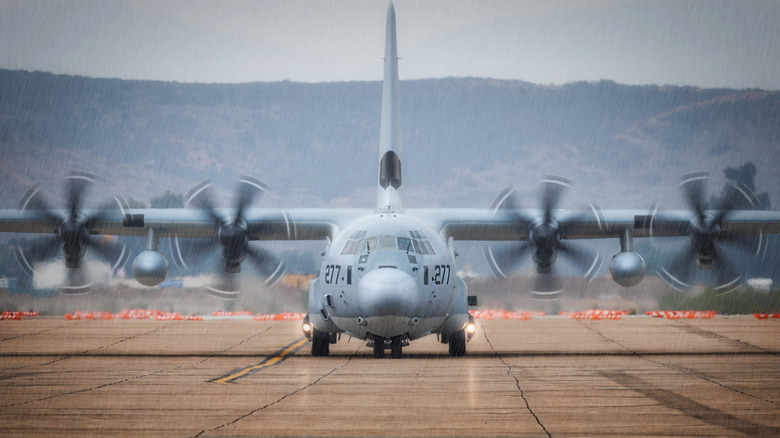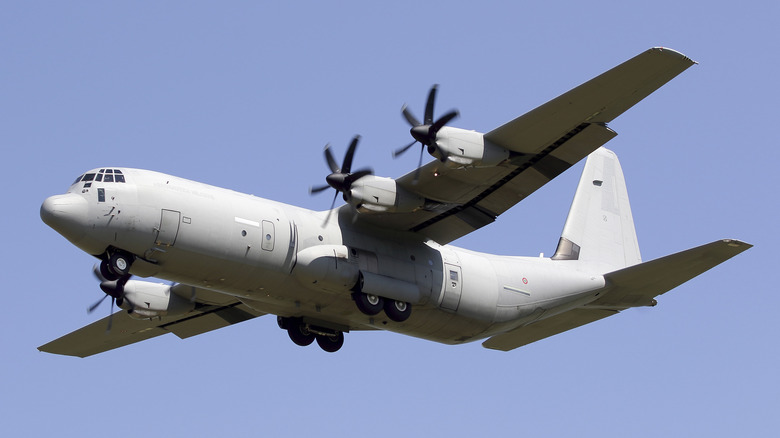Who Makes The C-130 Military Transport Plane And How Many Have Been Made So Far?
The United States Air Force is known around the world for its high-tech fighter jets capable of stealth and much more. While aircraft like the F-35 Lightning II or F-22 Raptor tend to get all the press, one of the most important planes in the U.S. Air Force's entire inventory isn't a fighter. The Lockheed C-130 Hercules is one of the most crucial aircraft used by the Air Force, and the service has been using them since 1956. That's a long service history for any aircraft.
Lockheed's C-130 endures because it's the true workhorse of the U.S. Air Force, handling the transport of pretty much everything the U.S. military needs taken from one place to another. If you ask anyone in the U.S. Army, Marine Corps, Air Force, or Navy, odds are they've sat in a C-130 at least once during their careers. That is because C-130s are almost ubiquitous: If there's a military base with an airport capable of handling the aircraft, there's a good chance C-130s fly in and out of the area all the time.
The C-130 operates worldwide and is capable of carrying just about anything needed into and out of a combat zone — a C-130 once landed on an aircraft carrier, making it the largest plane to do so. As of 2015, more than 2,500 have been built, and there are several variants of the aircraft as well. Despite the high number of aircraft built since the 1950s, not all of them remain in service. As of June 2022, the Air Force operates only 279 C-130s. The aircraft's numbers were cut over the decades from more than 500 during Operation Desert Storm to the current level of 279, while many are sold to allied nations.
From cargo transport to aerial support, the C-130 Hercules juggles a lot
One of the best-known variants is the legendary AC-130, which is effectively a flying tank. While many of the variants that have been built over the decades are no longer in production, Lockheed Martin continues to build the C-130J Super Hercules variant first introduced in June 1998; which features new engines, an improved flight deck, and updates to other systems. As of 2022, Lockheed Martin built 500 C-130Js, so they remain an important part of the U.S. Air Force mission.
The C-130J's base configuration is capable of carrying a great deal of cargo or personnel. Depending on its mission, one aircraft can carry up to 90 passengers, 64 airborne personnel, 72 litter patients, or up to 42,000 lbs. of payload. The aircraft itself is 97' 9" in length, 38' 10" high, and has a wingspan of 132' 7". The C-130J relies on four Rolls-Royce AE 2100D3 turboprop engines that provide 4,700 horsepower to its four six-bladed propellers.
The C-130J — like most C-130 variants — are flying trucks capable of carrying a great deal of weight, as its maximum takeoff weight is 155,000 lbs. In terms of speed, the C-130J has a maximum speed of 417 mph, though its cruising speed is typically 400 mph. It has a range of 2,100 miles (with a normal payload) and a service ceiling of 28,000 feet, though it can fly higher at just over 40,000 feet. The armed services that operate the C-130J aircraft are the active duty U.S. Air Force, the Air National Guard, and the Air Force Reserve.

